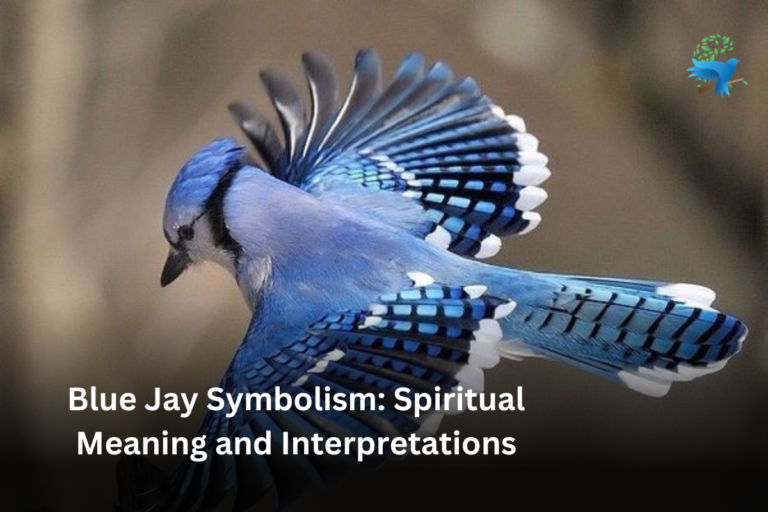10 Black Birds With Long Beaks (With Pictures)
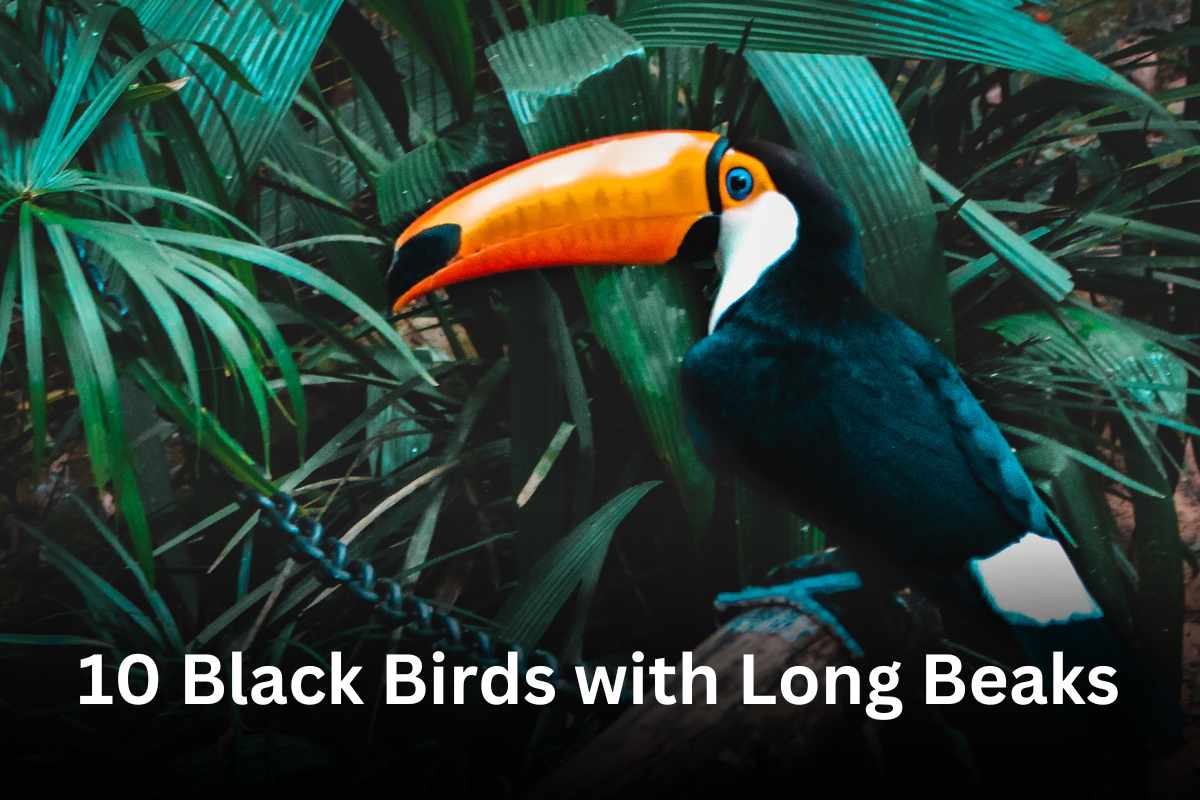
If you’re fascinated by birds, particularly those with long beaks, then this article is for you. Today, we’ll dive into the world of black birds that possess impressive elongated beaks.
These unique creatures each have their own distinctive features and can be found in various parts of the world. Let’s take a closer look at these magnificent beings.
List of 10 Black Birds with Long Beaks
- African openbill
- American crow
- Black eagle
- Black Goose
- Black Oystercatcher
- Black stork
- Black Vulture
- Great cormorant
- Rhinoceros hornbill
- Toco toucan
African Openbill
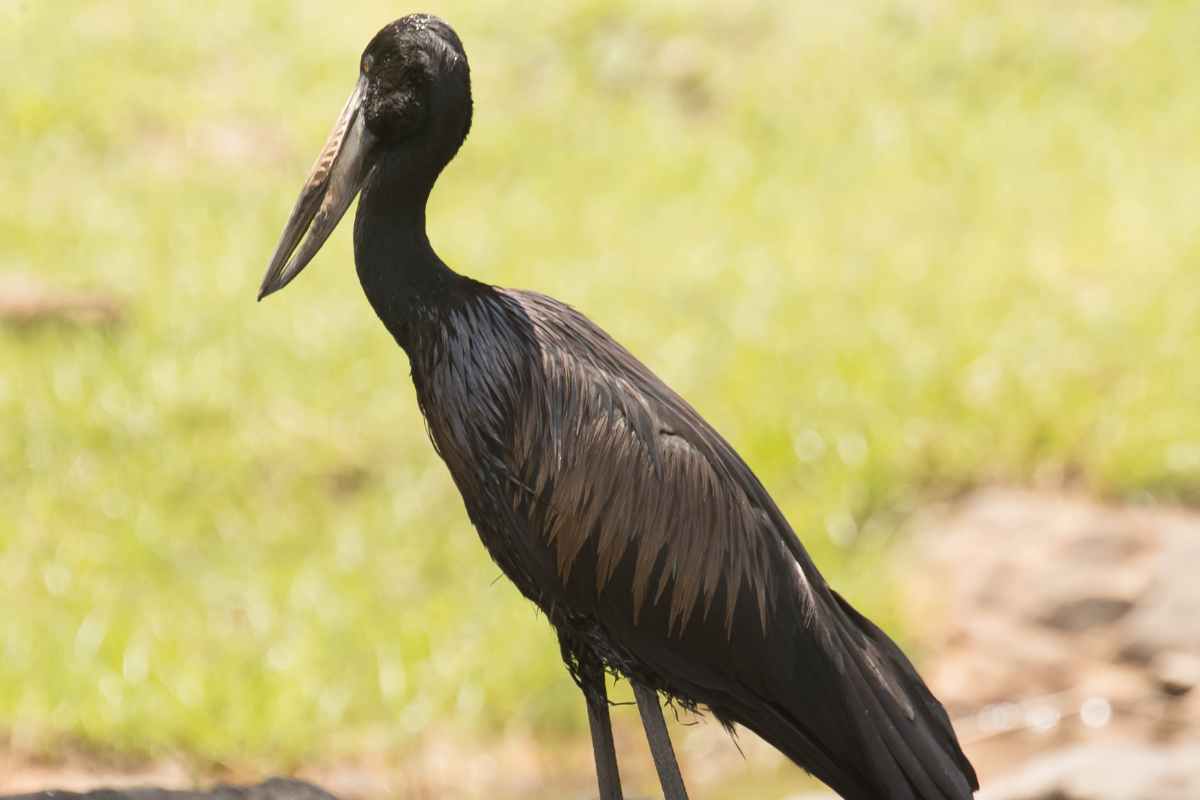
The African Openbill is a large black bird known for its distinct gap near the tip of its bill.
Size: Approximately 80–94 cm (31–37 in) tall, Wingspan around 120 cm (47 inches), Weighs: 1 kg (2.2 pounds), Bill: 135–196 mm (5.3–7.7 in) in length
Where to Find?: Primarily be seen in sub-Saharan Africa.
Diet: Feeds mainly on apple snails and other aquatic mollusks.
How to Identify?: Look for a slender body with black feathers and an unusual gap or separation between the upper and lower halves of their bills.
American Crow
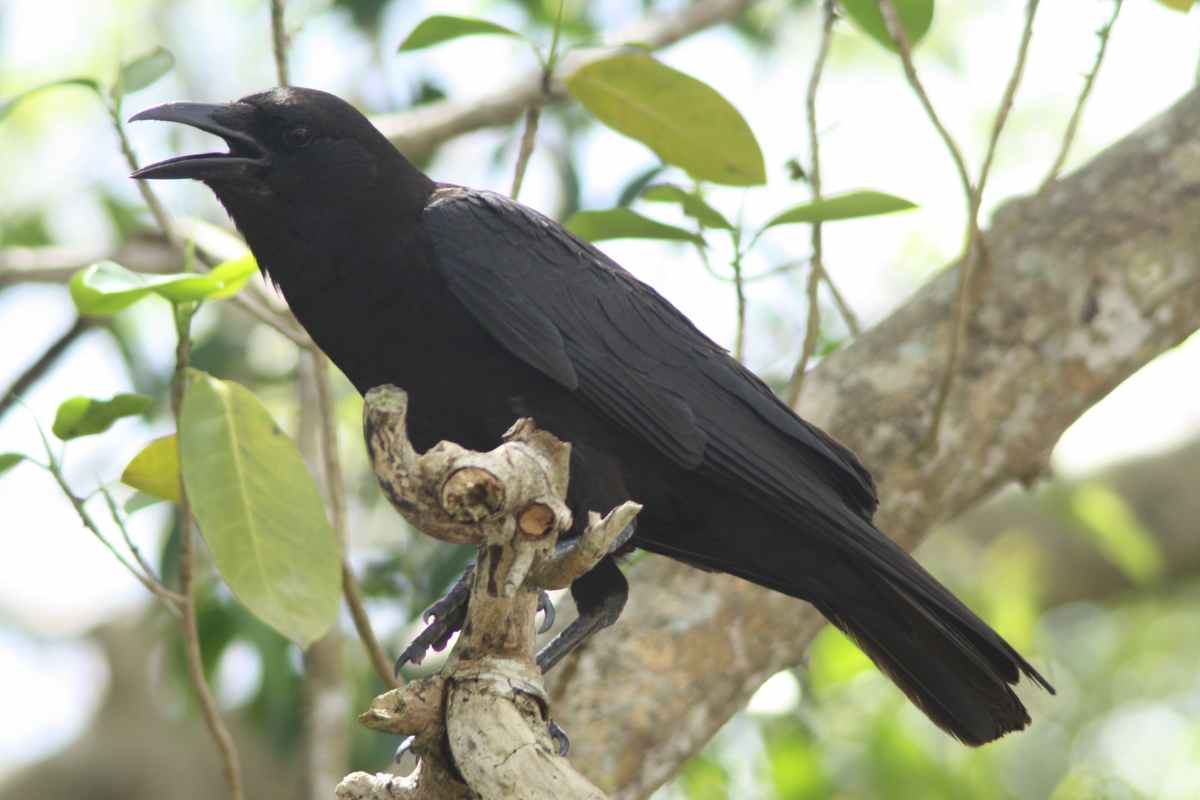
The American crow is a familiar bird found across North America, recognized by its jet-black plumage.
Size: Measures about 40–50 cm (16–20 inches) long; has a wingspan ranging from 80 to 100 cm (32–39 inches); typically weighs between 0.4 – 0.7 kg (0.9 – 1.5 pounds). The American crow’s beak is fairly large, 2-1/2 inches (6.37 cm).
Where to Find: Commonly seen throughout North America from urban areas to forests.
Diet: Omnivorous in nature, feeding on fruits, seeds, small animals, carrion, eggs, and even garbage when available.
How to Identify: Identifiable through its sleek black feathers along with its characteristic loud “caw” calls.
Black Eagle
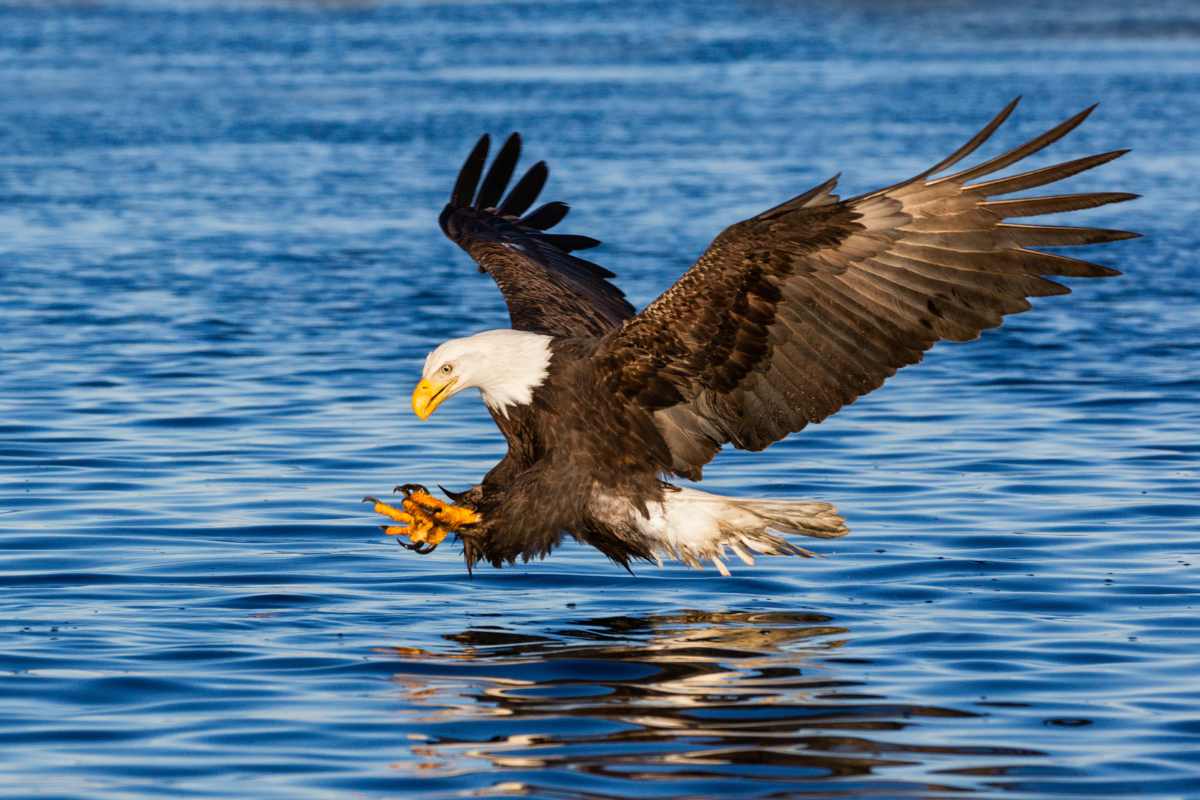
The black eagle is a majestic bird known for its large size and powerful beak.
Size: Bald eagles are 28 to 40 inches ( 40 -101 cm) in length, Average wingspan of about 2 meters (6.5 feet) and can weigh up to 4 kg (8.8 pounds).
Where to Find: Native to the African continent, specifically in Sub-Saharan regions.
Diet: Primarily preys on small mammals such as rodents, along with reptiles and birds.
How to Identify: Look for their deep black feathers, broad wings, and a distinctive hooked beak.
Black Goose
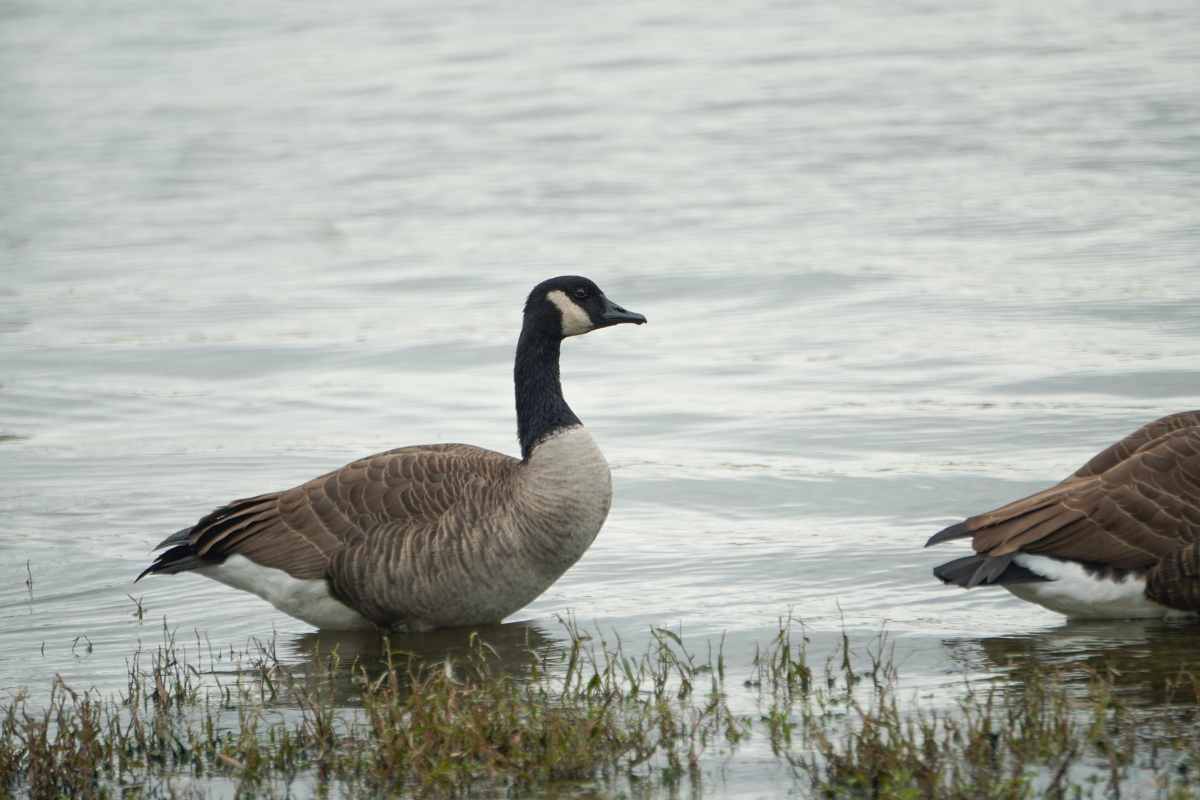
The black goose is a waterfowl species known for its dark plumage and long, pointed beak.
Size: Measures around 76–110 cm (29–43 inches) in length; has a wingspan ranging from 130 to 170 cm (51–56 inches); typically weighs between 1.5 – 2.5 kg (3.3 – 5.5 pounds).
Where to Find: Found in various regions of the world, including North America, Europe, and Asia.
Diet: Primarily herbivorous, feeding on aquatic vegetation such as grasses and pond weeds.
How to Identify: Look for their sleek black feathers with occasional white accents and their elongated beaks.
You May Also Like: 15 Small Green Birds of Florida (With Pictures) >>>
Black Oystercatcher
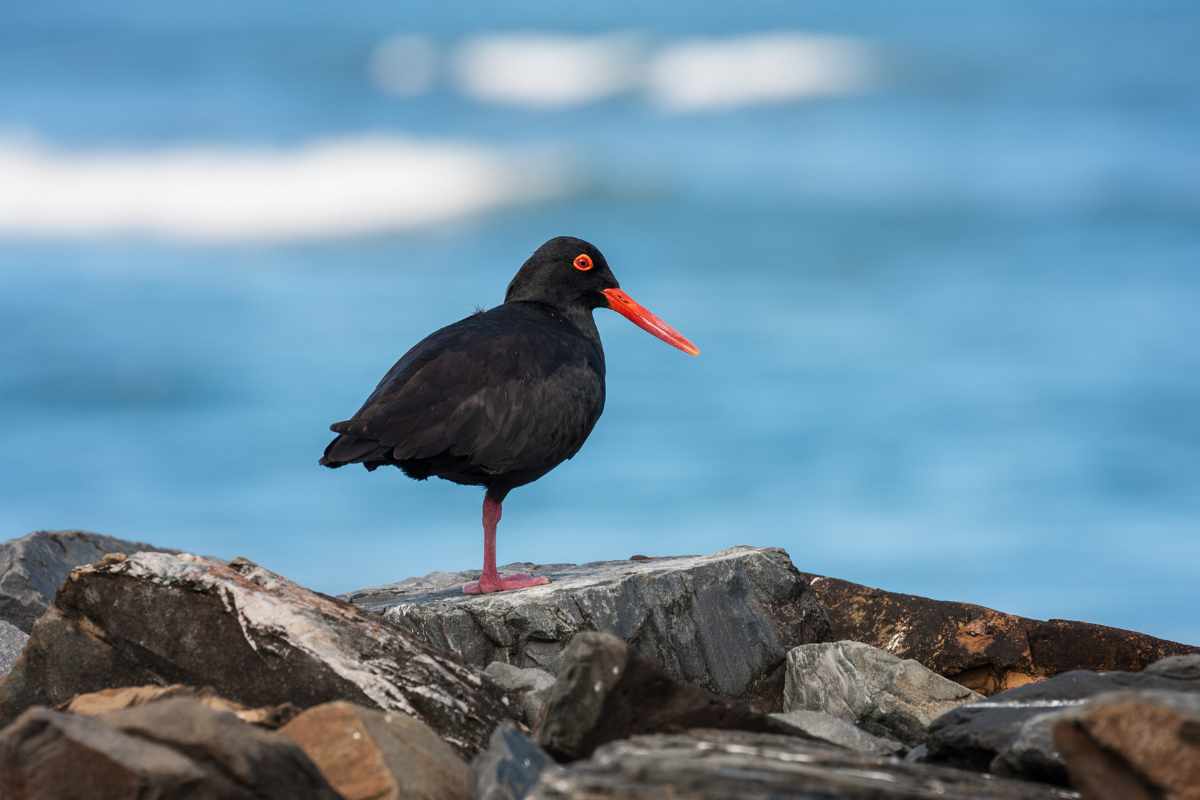
Short Description: The black oystercatcher is a coastal bird known for its long, slender beak and remarkable feeding behavior.
Size: Measures around 40–45 cm (16–18 inches) in length; weighs approximately 1-1.5 kg (2-3 pounds); wingspan reaches up to 70-92 cm (28-36 inches).
Where to Find: Found along the coasts of North America, especially in rocky shorelines and estuaries.
Diet: Feeds primarily on mollusks like mussels and limpets, using their strong bills to pry open shells.
How to Identify: Look for black plumage, pink legs, and a bright red-orange beak.
Black Stork
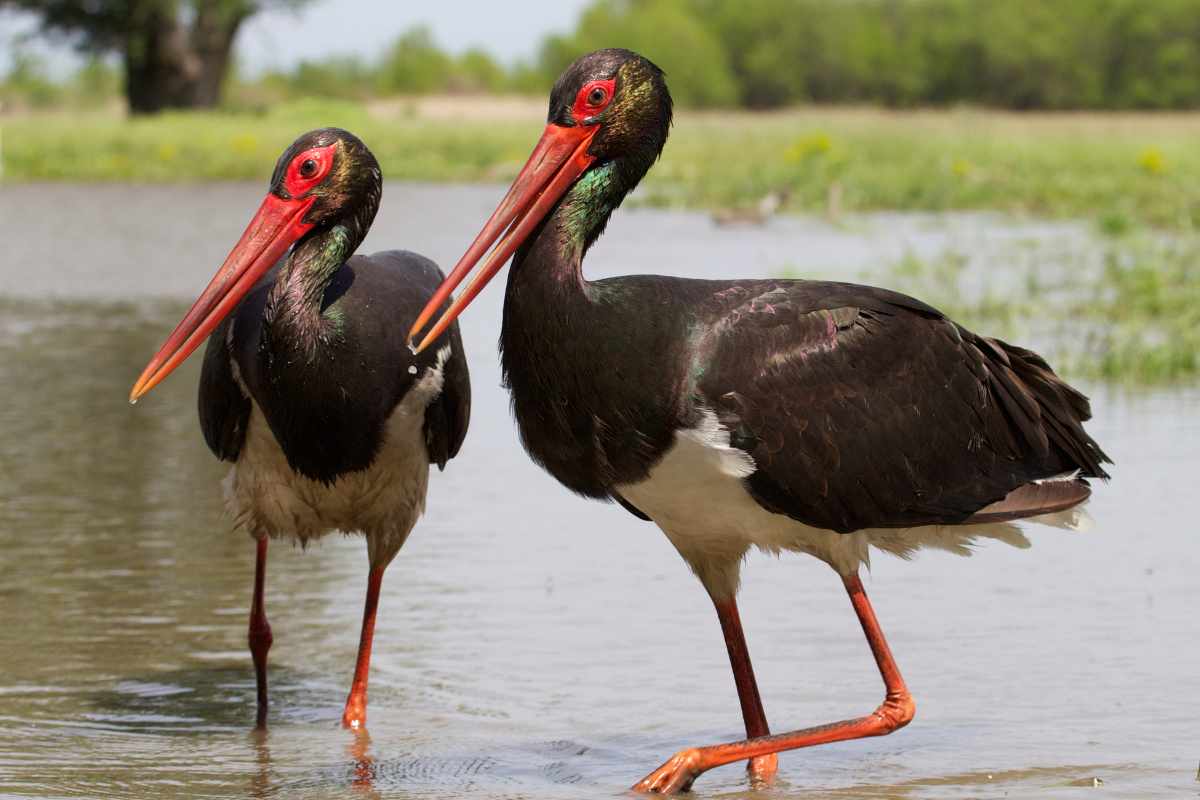
The black stork is an elegant bird known for its shiny black plumage, towering height, and long beak.
The black stork showcases grace coupled with strength as it gracefully soars through the sky. With its elongated beak perfectly suited for catching prey like fish or frogs, this magnificent avian species exemplifies nature’s remarkable adaptations.
Size: Measures around 95–100 cm (37–39 inches) in length; has a wingspan ranging from 150 to 160 cm (59–63 inches); typically weighs between 2 -4.5 kg (4.4 – 9.9 pounds).
Where to Find: Found in various parts of Europe, Asia, and North Africa during breeding seasons.
Diet: Feeds primarily on fish, amphibians, small mammals, insects, and even snakes.
How to Identify: Look for their glossy black feathers with distinctive white underparts and a long red bill.
Black Vulture
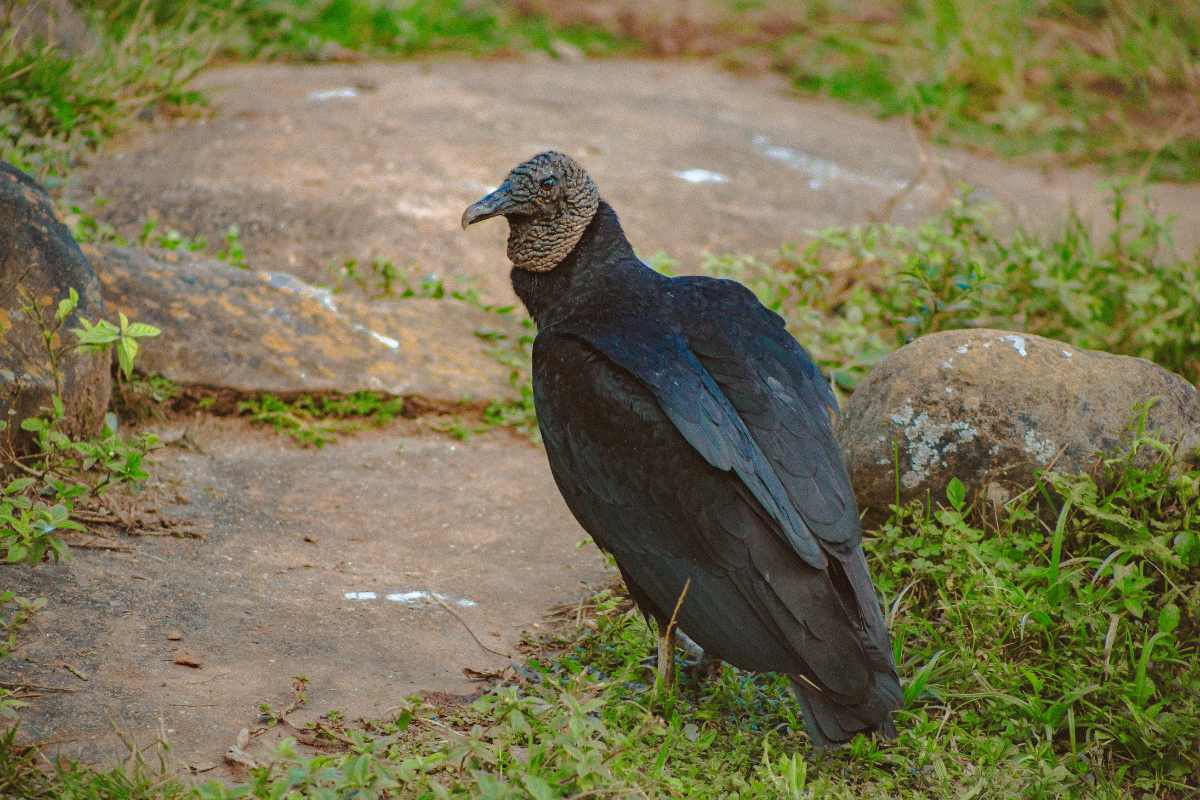
Short Description: The black vulture is a large bird of prey known for its impressive wingspan and strong, hooked beak.
Size: Measures around 56–66 cm (22–26 inches) in length; has a wingspan ranging from 150 to 170 cm (59–67 inches); typically weighs between 2-2.75 kilograms (4.5-6 lb).
Where to Find: Found across the Americas, from southern Canada to South America.
Diet: Feeds on carrion, making them important scavengers within their ecosystems.
How to Identify: Look for their entirely black feathers, bald head covered in wrinkled skin, and powerful beak.
Great Cormorant
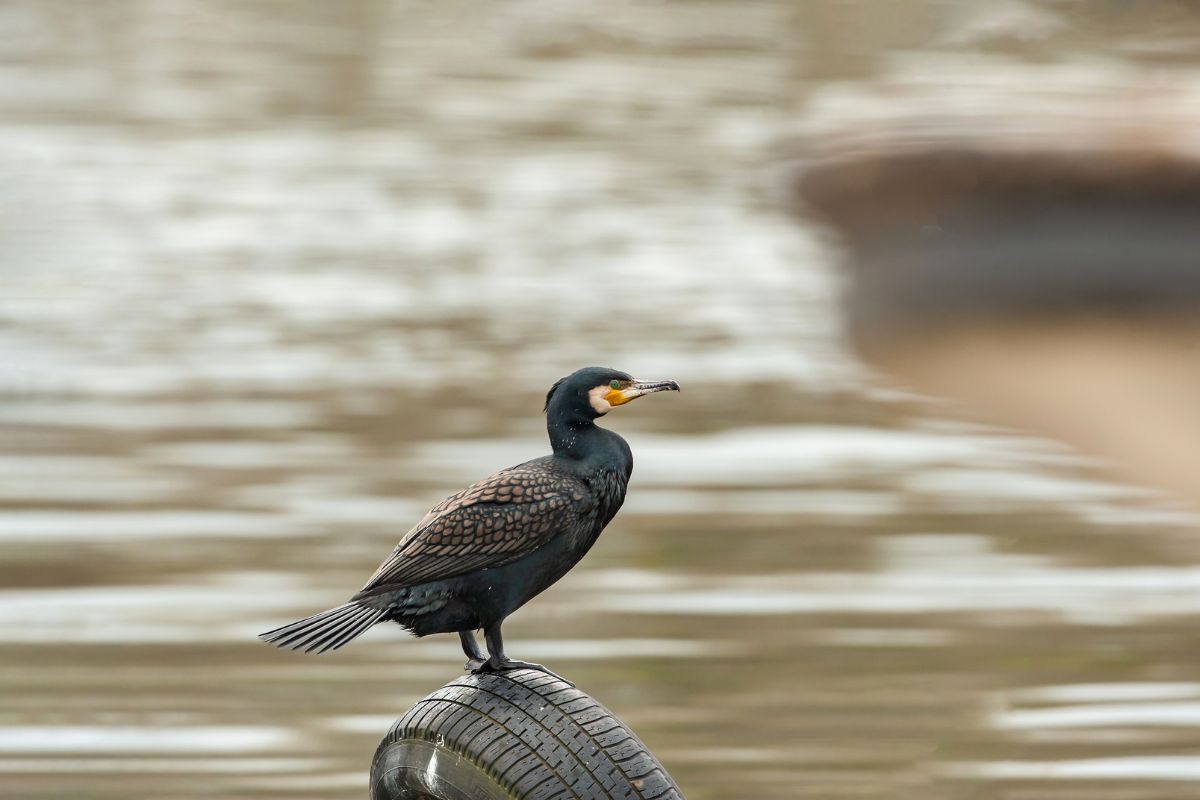
The great cormorant is a large water bird with a distinctive long, hooked beak commonly found near coastal and inland waters.
Size: Measures about 80–100 cm (31-39 inches) in length; has an impressive wingspan of up to 160 cm (63 inches); weighs around 2.5 kg (5.5 pounds).
Where to Find: Can be spotted worldwide in various habitats, including lakes, rivers, estuaries, and coastal areas.
Diet: Feeds primarily on fish, diving underwater to catch its prey using its strong beak.
How to Identify: Look for their black plumage with a slender body shape and the characteristic long neck that sticks out when swimming.
Read More: 15 White Birds In Michigan (Pictures And Description) >>>
Rhinoceros Hornbill
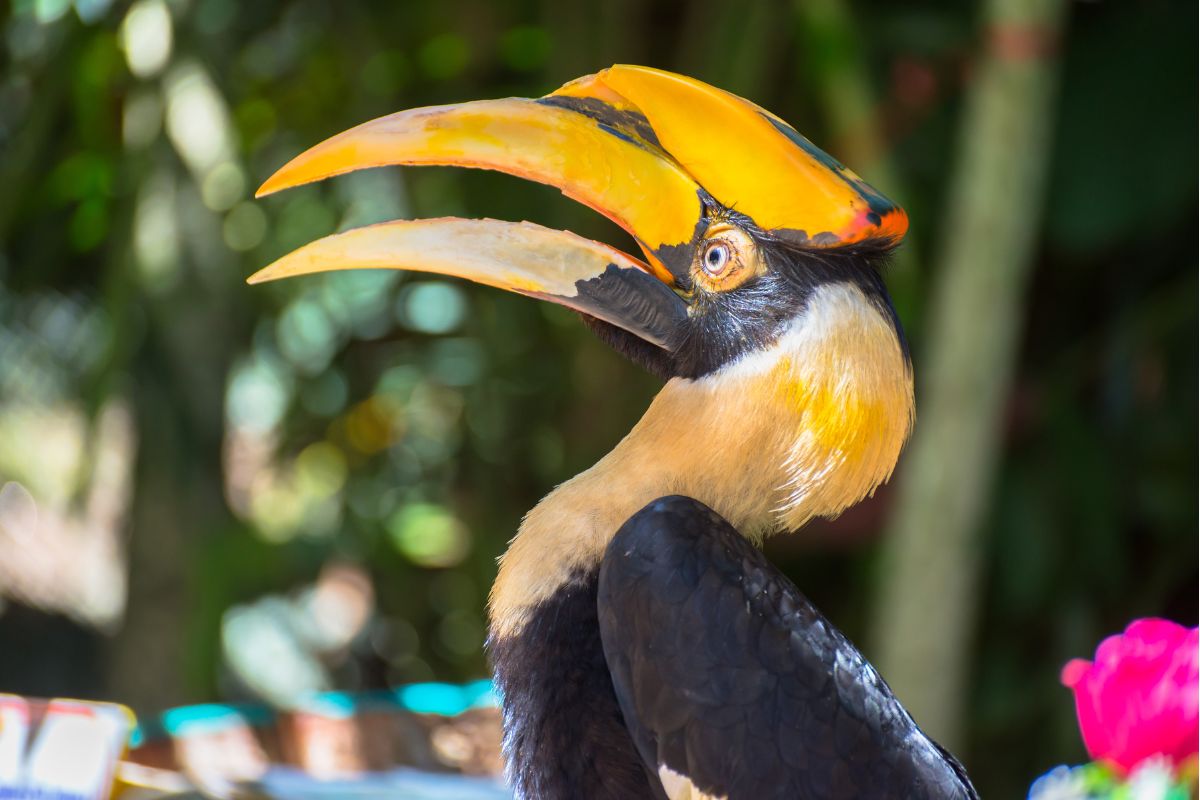
Short Description: The rhinoceros hornbill is a majestic bird known for its large, curved bill reminiscent of a rhino’s horn.
Size: Measures approximately 70–100 cm (27–39 inches) in length; wingspan of up to 150cm (59in) across, weighs around 2.2 kg (4.8 pounds).
Where to Find: Native to the rainforests of Southeast Asia, particularly in Indonesia and Malaysia.
Diet: Feeds on fruits, insects, small reptiles, mammals, and even other birds.
How to Identify: Look for their black plumage with white feathers on wings and tail, along with their impressive casque-like bill.
Toco Toucan
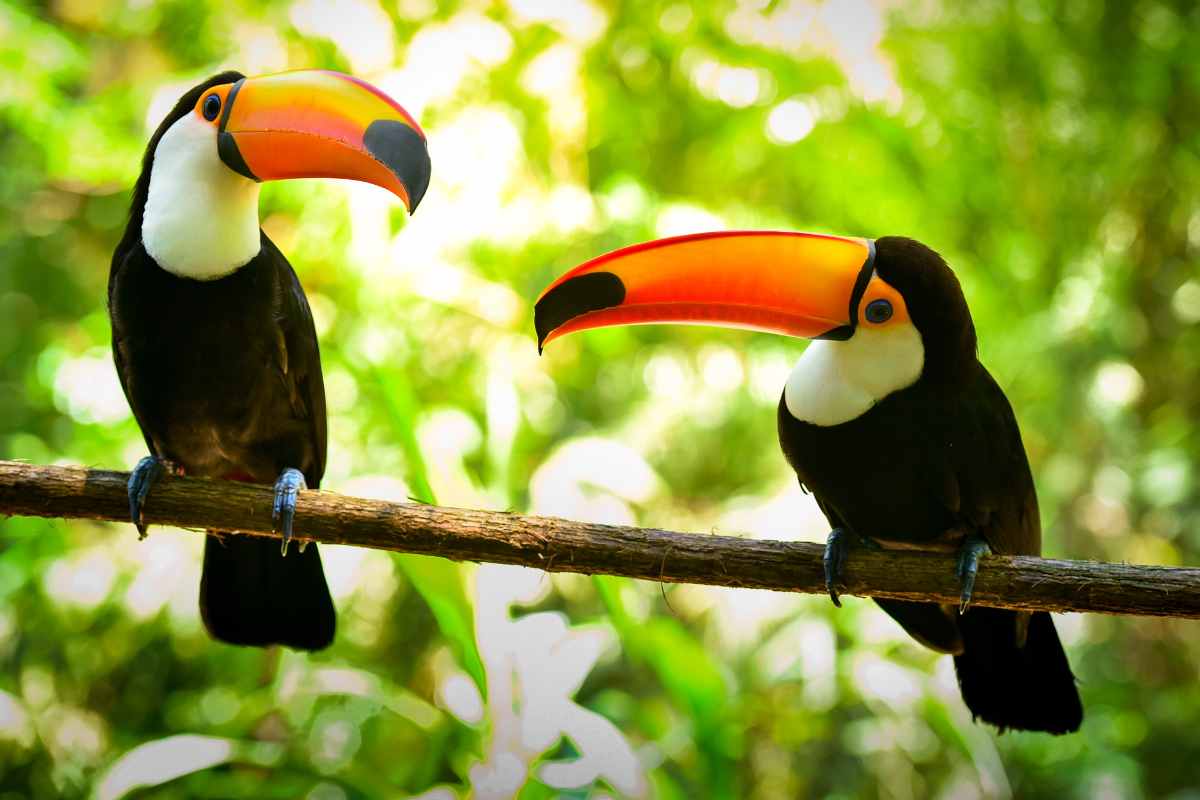
Short Description: The toco toucan is a striking bird known for its large, colorful bill and vibrant appearance.
Toco Toucan stands out due to its unique appearance. Its long beak serves various purposes such as reaching fruits high up on trees or attracting potential mates through impressive displays.
Size: Measures approximately 55–65 cm (22–26 inches) in length; weighs around 500 – 850 grams (1.1 – 1.9 pounds). These toucans have wings measuring 50-119cm (20-47in) across.
Where to Find: Found in South America, particularly in the tropical rainforests of Brazil, Argentina, and Paraguay.
Diet: Feeds on fruits, insects, small reptiles, eggs, and nestling birds when available.
How to Identify: Look for their black plumage with white throat and chest; their most distinctive feature is their enormous orange-yellow bill.
The world of birds never ceases to amaze us with its diversity of colors, shapes, and behaviors—like these ten remarkable black birds with long beaks. From the African Openbill’s peculiar gap to the Toco Toucan’s majestic bill – each offers a glimpse into nature’s creative expressions.
Whenever you have the chance to observe these incredible creatures in person or simply appreciate them from afar through photographs or documentaries—one thing becomes clear—the natural world is filled with wonders waiting for us all!



